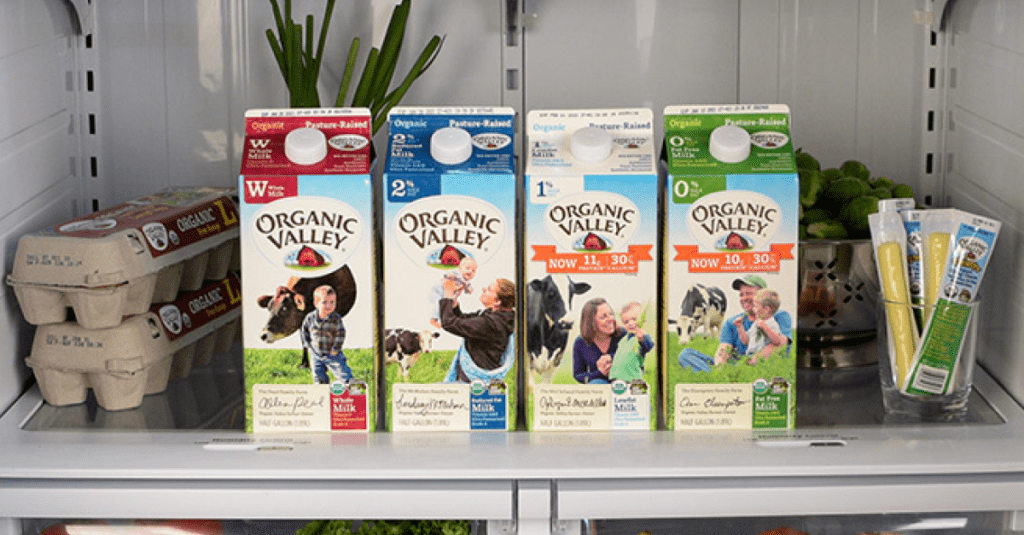How the experts get results: 8 examples of consumer research

Ever look at a brilliant move from a brand and think: how did they nail that so seemingly effortlessly?
The answer often involved customer research.
At its core, consumer research is the gathering and analysis of information about target markets, consumers, and potential customers. It’s not just about numbers and graphs—though they have their place—it’s about understanding people. And with understanding people, you’ll get to understand what tactics and campaigns will win for your brand.
Your research can shape products, influence marketing strategies, and even drive innovation. Whether it’s understanding how customers feel, what they think, or how they behave, consumer research offers a blueprint for brands to build deeper, more meaningful connections with their audience.
There are countless tools at your disposal to crush your customer research. From the ever-popular to the more niche, here are some of the key research methods brand like yours use:
- Online surveys: Tap into real-time feedback and broad audiences with just a few clicks.
- Phone surveys: Engage in deeper, personal conversations and get nuanced insights.
- Focus groups: Dive into group dynamics and gain qualitative insights from lively discussions.
- Field observations: Observe consumers in their natural habitat to glean non-verbal cues and real-world behaviors.
- In-depth interviews: Get detailed, in-depth feedback on specific topics.
- Product testing: Put your product in the hands of consumers and see it through their eyes.
- Multivariate testing: Compare multiple different concepts with your target customers.
What are the goals of consumer research?
Consumer research is used by businesses to understand their audience more deeply, and to adapt their strategies accordingly—minimizing risks and maximizing revenue. It provides valuable data and insights that influence decisions at every level—from product development to marketing strategies. By digging into the why and how of consumer behavior, brands can make informed choices that truly resonate with their audience, without having to fear they’ll completely miss the mark.
When diving into consumer research, a brand might have several goals in mind, such as:
- Uncovering consumer needs: What are the unsaid (and said!) desires or pain points of your audience?
- Predicting market trends: Where is the market headed? What are significant patterns?
- Enhancing product development: How can your product evolve to serve your customers better?
- Crafting effective marketing campaigns: What messages will truly resonate with your target audience?
- Understanding purchase decisions: Why do consumers choose one brand over another? When and why do people buy?
- Measuring brand perception: How do consumers view your brand compared to competitors?
- Identifying growth opportunities: Are there untapped markets or segments to explore?
8 Consumer research examples (and how to get better insights from your research)
1. Bloom & Wild learned from their target market how to make Valentine’s Day fresh again
Bloom & Wild, a direct-to-door flower company from London, wanted to shake things up—but not without doing their due diligence with market research first. They were over the red roses game on Valentine’s Day and wanted to see if their customers were too. Let’s just say, things got bloomin’ interesting.
Key takeaways:
- Challenge assumptions: Just because it’s tradition doesn’t mean it’s right. Bloom & Wild suspected red roses were kinda old news for V-Day. Attest showed a lot of folks felt the same.
- Dig for the real story: Thanks to Attest, they found out 79% of people prefer thoughtful gifts over the same-old. And red roses? 58% found them too cliche.
- Make waves with your data: Strong data makes strong campaigns. Bloom & Wild said goodbye to red roses and launched the “No Red Roses” campaign. A bold move that gave them loads of press.
- The results? Mega blooms: No red roses, no problem. Valentine’s Day sales quadrupled and press coverage went up by 51%.
- Feedback = fab conversations: It wasn’t just about sales and press. Their social channels lit up with folks sharing heartwarming love stories. When you listen to your customers and take risks, people notice (and love it).
2. Little Moons tapped into their true target customers thanks to customer research data
Little Moons, those yummy Japanese mochi ice cream bites, went big on TikTok. But they didn’t just want to be a 15-second sensation; they wanted to scoop up the long game. Let’s unpack how they didn’t just melt away after the TikTok frenzy, thanks to the coolest customer research.
Key takeaways:
- Find out who your customer is: If you think TikTok, you think teens. Customer research surprised them: it’s the 30+ audience that found out they were the ones buying their treats.
- Widen the stage: Just being a TikTok sensation isn’t the endgame. Little Moons wanted EVERYONE to know their name. So, they aimed for big newspaper names—think Telegraph, Express, Sun—to make their mochis more mainstream.
- Customers build brands: It’s not just brand managers and marketers. Working with consumer research insights meant their brand awareness shot up.
3. Penfold combined conducting customer research with brand tracking—a smart move
Penfold, the fresh face in digital pensions, saw huge growth in a short time. But growth can be a double-edged sword. With all these new customers, they wondered: “Who are we really connecting with?” They didn’t have any past metrics to compare to, and customer research with brand tracking seemed the way to go. They just needed a tool that was both budget-friendly and user-friendly.
Key takeaways:
- The growth conundrum: Penfold’s growth was impressive, tripling pension transfers in just a year. But they were navigating without a map, lacking historical brand metrics. Good news: even when that’s lacking, you can still dig into customer research.
- Tracking over time: Brand tracking and market research with Attest delivered some clear messages. Engaging the younger crowd in pensions? Easier said than done. But after a year of tracking and customer research, Penfold is better equipped. They now tailor their messaging to resonate more effectively with their audience.
- Customers and competition: Using Attest, Penfold can keep tabs on their competitors, not just their customers. They can gauge who’s getting attention and strategize on distinguishing their brand, to turn the attention back to themselves.
4. psLondon redefined university marketing through Gen Z insights
psLondon, a seasoned creative and brand consultancy, faced a challenge. Many universities seemed to echo similar messages. And they didn’t resonate. They needed fresh insights, especially from the Gen Z perspective, to help each university carve its distinct identity. Their customer research with Attest helped them formulate stellar campaigns.
Key takeaways:
- Ask consumers about core values: psLondon sought to understand the unique values students associated with their universities. Their research led to distinct insights, like a university standing out for its emphasis on “freedom”, which then translated to a compelling tagline: “the freedom to achieve”.
- Replicating success: The value-based rebranding approach was not a one-off success. Post its initial triumph, psLondon applied the strategy to four more UK universities, and kept that ball rolling.
- Using customer research beyond aesthetics: This method is not just about a fresh coat of paint. It’s about understanding and communicating intrinsic values that resonate deeply with students. Their approach to customer research has not only made them sought-after in university marketing, but has also led them to share their insights at conferences and in white papers.
5. Evive Nutrition’s used customer insights to guide them on their American journey
Evive Nutrition, after having garnered immense success in Canada with its innovative frozen smoothie cubes, took a bold leap into the US market last year. Consumer research played a key role in this expansion journey.
Key takeaways:
- Value of subscriptions: Evive’s unique business model hinges on their subscription-based approach. While they boast a strong presence in physical stores, their customer research revealed the growing trend and value of direct-to-door deliveries, especially amidst the modern consumer’s quest for convenience.
- Adapting to America: The significance of customer research can’t be overstated, especially when venturing into unfamiliar territory. Through Attest, Evive was able to gather crucial insights into American consumer preferences, from preferred flavours to feedback on their communication strategies.
- Tailored messaging for the US: Armed with these insights, Evive meticulously tailored its content strategy for the American audience and US consumer trends for 2023. This went beyond mere promotional materials and trickled down to their website, content creation, and even product packaging.
6. Organic Valley’s used customer insights to create breakfast bites nobody can resist
Organic Valley knows a thing or two about great breakfast snacks, but working together with their target audience really elevated their game. Their approach underscores the importance of customer insights not just in product development but even in nuanced elements like naming.
Key takeaways:
- Fueling innovation with feedback: They didn’t just aim to create a new product; they wanted one that was both innovative and well-received. By leveraging consumer research insights via Attest, Organic Valley could accelerate the innovation process, optimize messaging, and refine product iterations.
- The name game: It became evident that while flavor was crucial, naming played an equally vital role in the consumers’ perception. A flavor’s name could conjure memories, emotions, and expectations, and Organic Valley was keen on ensuring that these names reflected the product accurately and appetizingly.
- Efficiency and cost-savings: One of the standout benefits of this early-stage consumer feedback was the significant cost savings for Organic Valley. Prompt learnings through Attest saved the brand between 10 to 20 times the potential costs they might have incurred from late-stage adjustments or missteps.

7. GoCardless tapped into customer research to make payments painless
Ever faced a hiccup at the online checkout? GoCardless sure noticed. Intent on understanding the very essence of these hiccups, they delved into their customers’ payment woes to make their sales and marketing efforts truly resonate.
Key takeaways:
- Zooming in on payment pain points: Online checkouts can be tricky. Sometimes, they’re even downright frustrating. GoCardless wasn’t content to just acknowledge that—they wanted to know the ins and outs. Their goal was to tailor their offerings in a way that directly addressed these prevalent payment challenges and expressed their brand’s value proposition.
- Research-backed solutions: No longer does GoCardless roll out a solution based on mere assumptions. Each of their product launches now stands on a solid foundation of customer research, ensuring it’s not just another feature but a real answer to a genuine customer need.
- A value proposition that sticks: By tapping into direct consumer insights, GoCardless sharpened their value proposition, making it more compelling.
8. DRY Soda Co. harnessed consumer research to drive an impressive 170% revenue surge
DRY Soda Co. didn’t let themselves be stopped by restrictions people faced during the COVID-19 pandemic. With their traditional launch methods now inaccessible, they harnessed the power of consumer research through Attest and saw big wins.
Key takeaways:
- The challenge of conventional approaches: With COVID-19 throwing a wrench in the works, DRY’s initial “try and buy” strategy of in-store and bar demos for their DRY Botanical Bitters & Soda was halted.
- Pivoting to alternative consumer research methods: Rather than giving in to the setback, DRY channeled their energy into gathering customer research insights. Small focus groups set the initial tone, and these findings were then magnified using Attest.
- Tailored design from direct insights: Consumer feedback obtained through Attest played a pivotal role in product branding. The design effectively embodied the sophistication of a zero-proof cocktail. Furthermore, the emphasis on the “zero-sugar” element, a prime attraction for many consumers, stemmed directly from these insights.
What are the benefits of conducting consumer research?
Always doing the same in a market where things change rapidly is a recipe for disaster. Consumers drive trends and changes in every industry, and brands should be following them—it’ll rarely work the other way around.
So, gaining insights from consumer research is crucial for brands aiming to understand, adapt, and evolve. Depending on the specific goals and questions a brand has, they may opt for quantitative or qualitative customer research methods, each with its own unique advantages.
The importance of quantitative research
Definition: Quantitative research involves collecting numerical data to understand patterns, frequencies, and trends. Quantitative consumer research often employs structured surveys to gather data from a larger sample size for primary research, but secondary sources can be used too.
Benefits:
- Broad insights: Provides a wider view of consumer behaviors and opinions.
- Statistical significance: Offers data that can be statistically analyzed for more reliable conclusions.
- Clear trends: Easily identify dominant patterns in consumer behaviors or preferences.
- Speed and efficiency: Online tools and platforms can quickly reach a large number of respondents.
The importance of qualitative research
Definition: Qualitative market research delves deep into consumer behaviors, emotions and reasons behind certain choices. Qualitative consumer research often involves primary research methods like focus groups or video interviews to gain more detailed insights.
Benefits:
- In-depth understanding: Offers deeper insights into the “why” behind consumer decisions.
- Flexibility: Allows for adaptive questioning based on responses.
- Rich data: Gathers detailed anecdotes, stories, and reasons that can provide context.
- Uncovering nuances: Captures the subtleties in consumer emotions and preferences.
By understanding the strengths of both quantitative and qualitative customer research, brands can select the right approach for their specific needs, ensuring they obtain insights that are both broad in scope and deep in understanding.
Best practices for seamless consumer research
Consumer research can be a game-changer for brands, but to truly harness its power, it’s crucial to approach it with the right strategies. Here are some expert-recommended best practices to ensure you get the most out of your research efforts:
Use consumer research tools to conduct customer research
Conducting market research at scale and with depth is best done using consumer research tools. They can significantly streamline the process and provide more accurate results. These tools offer a structured way to gather, analyze, and interpret data, making the entire process more efficient and effective.
Prioritize clear objectives
Before you conduct market research of any type, it’s essential to define clear objectives. What are you trying to achieve with this research? Whether it’s understanding consumer preferences, identifying market gaps, or measuring brand perception, having a clear goal ensures your efforts are directed effectively.
Be open to unexpected insights
While it’s essential to have clear objectives, it’s equally important to be open to unexpected insights. Sometimes, the most valuable information comes from unplanned findings. By being receptive to these, you can uncover new opportunities or areas of improvement.
Ensure diversity in your sample
It’s crucial to ensure that your sample represents a diverse set of consumers. This helps in capturing a wider range of perspectives, leading to richer insights. Make sure that your participants vary in age, gender, ethnicity, socioeconomic status and other demographic factors relevant to your study. The right consumer insights software helps you diversify your samples, but makes sure to check.
Validate and re-test
Once you’ve gathered your initial insights, it’s always a good practice to validate them with your entire consumer insight team. This could mean conducting a follow-up study, re-testing your hypotheses, or analyzing the data through another lens, making sure all teams are aligned. This ensures that the insights are robust and not just a one-off anomaly.
Conduct better consumer research with the right tools
If you’re looking to conduct customer research and really want to dig deep—and not just scratch the surface of customer satisfaction numbers or basic personas—try Attest.
Our research platform help you get a deeper understanding of what moves your target consumers, leaving you with all the data you need to inform your strategies. You’ll get a dedicated research expert to support you along the way, and it’s an easy start from our templates.
Ready to get to know your customers?
FAQs
Consumer research is the process of gathering, analyzing and interpreting information about a company’s target audience. This research helps brands understand consumer needs, preferences, behaviors, and motivations, allowing them to make informed decisions about product development, marketing strategies, and other business areas.
It’s always customer research ‘o clock somewhere. Consumer research should be conducted at various stages of a product or service lifecycle. This includes before a product launch (to understand market needs), post-launch (to gather feedback and refine), and periodically thereafter (to stay updated with changing consumer behaviors). It’s also crucial during brand repositioning, entering new markets, or when addressing specific challenges in the market.
It does depend on your specific goals and the tools you will use, but there is a general framework that you can draw inspiration from. Different consumer insight companies will follow slightly different processes, but the best consumer research process involves a series of structured steps:
1. Defining clear research objectives.
2. Selecting the appropriate research method (quantitative, qualitative, or a mix).
3. Designing the research tool (e.g., survey or focus group).
4. Collecting data from a representative sample (both qualitative data and quantitative data)
5. Analyzing and interpreting the data.
6. Presenting the findings in a comprehensible manner to stakeholders.
The specific questions in consumer research will vary based on objectives. However, some common questions include:
– What factors influence your purchase decision?
– How satisfied are you with our product?
– What improvements would you like to see?
– How does our brand compare to competitors?
It’s essential to ask open-ended questions to capture comprehensive insights and ensure questions are unbiased to get genuine response
Consumer research provides brands with insights into their target audience’s needs, behaviors, and preferences, which is the guiding light for any successful brand. It enables them to create products and services that resonate with their audience, craft effective marketing strategies, identify market opportunities, and address challenges proactively.
Tell us what you think of this article by leaving a comment on LinkedIn.
Or share it on:



